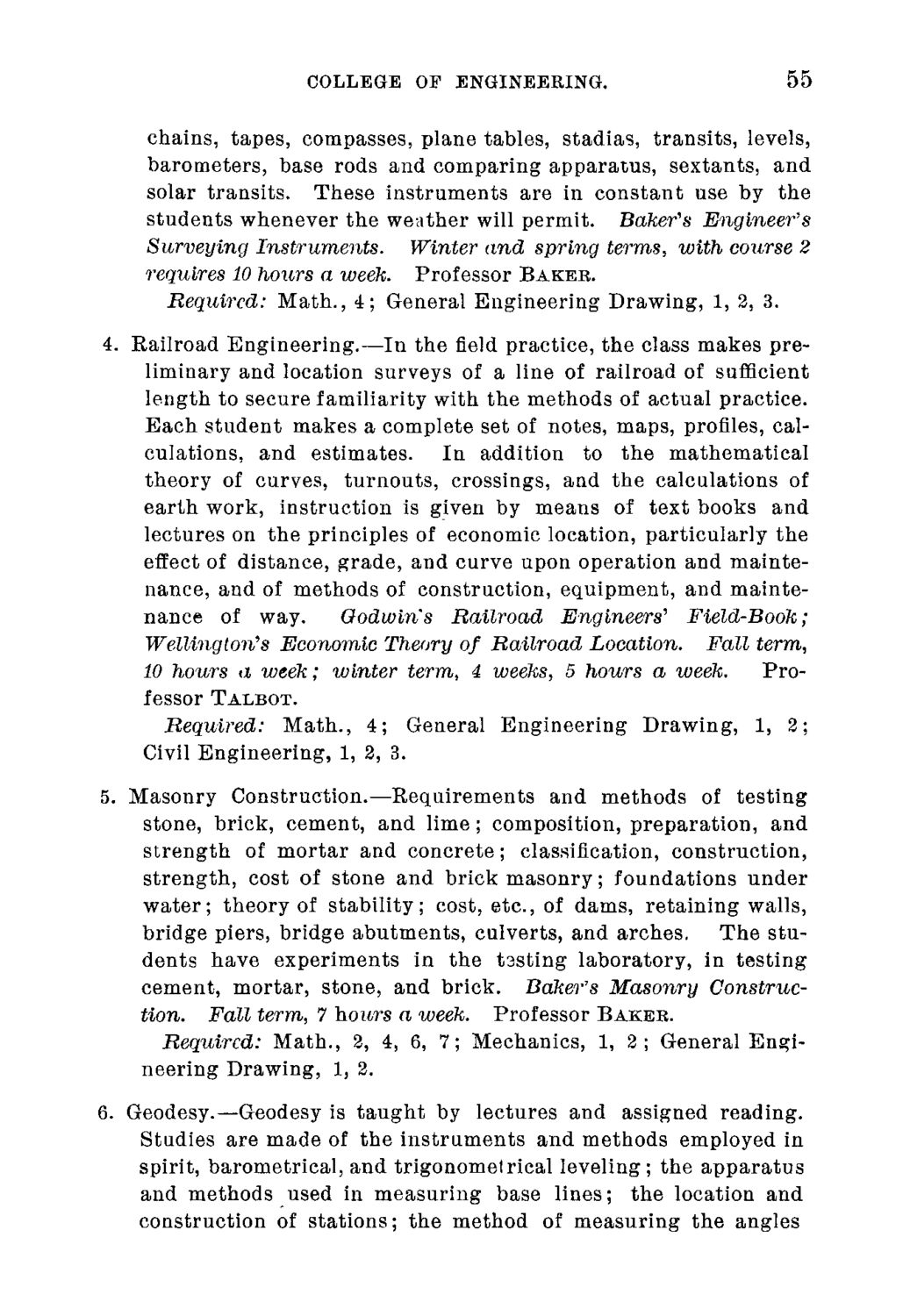| |
| |
Caption: Course Catalog - 1891-1892
This is a reduced-resolution page image for fast online browsing.

EXTRACTED TEXT FROM PAGE:
COLLEGE OF ENGINEERING. 55 chains, tapes, compasses, plane tables, stadias, transits, levels, barometers, base rods and comparing apparatus, sextants, and solar transits. These instruments are in constant use by the students whenever the weather will permit. Baker's Engineer's Surveying Instruments. Winter and spring terms, with course 2 requires 10 hours a week. Professor BAKEB. Required: Math., 4; General Engineering Drawing, 1, 2, 3. 4. Railroad Engineering.—In the field practice, the class makes preliminary and location surveys of a line of railroad of sufficient length to secure familiarity with the methods of actual practice. Each student makes a complete set of notes, maps, profiles, calculations, and estimates. In addition to the mathematical theory of curves, turnouts, crossings, and the calculations of earth work, instruction is given by means of text books and lectures on the principles of economic location, particularly the effect of distance, grade, and curve upon operation and maintenance, and of methods of construction, equipment, and maintenance of way. Godwin's Railroad Engineers' Field-Book; Wellington's Economic Theory of Railroad Location. Fall term, 10 hours a week; winter term, 4 weeks, 5 hours a week. Professor TALBOT. Required: Math., 4; General Engineering Drawing, 1, 2; Civil Engineering, 1, 2, 3. 5. Masonry Construction.—Requirements and methods of testing stone, brick, cement, and lime; composition, preparation, and strength of mortar and concrete; classification, construction, strength, cost of stone and brick masonry; foundations under water; theory of stability; cost, etc., of dams, retaining walls, bridge piers, bridge abutments, culverts, and arches. The students have experiments in the tssting laboratory, in testing cement, mortar, stone, and brick. Baker's Masonry Construction. Fall term, 7 hours a week. Professor BAKES. Required: Math., 2, 4, 6, 7; Mechanics, 1, 2; General Engineering Drawing, 1, 2. 6. Geodesy.—Geodesy is taught by lectures and assigned reading. Studies are made of the instruments and methods employed in spirit, barometrical, and trigonometrical leveling; the apparatus and methods used in measuring base lines; the location and construction of stations; the method of measuring the angles
| |